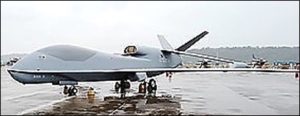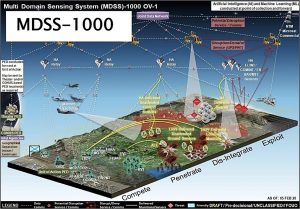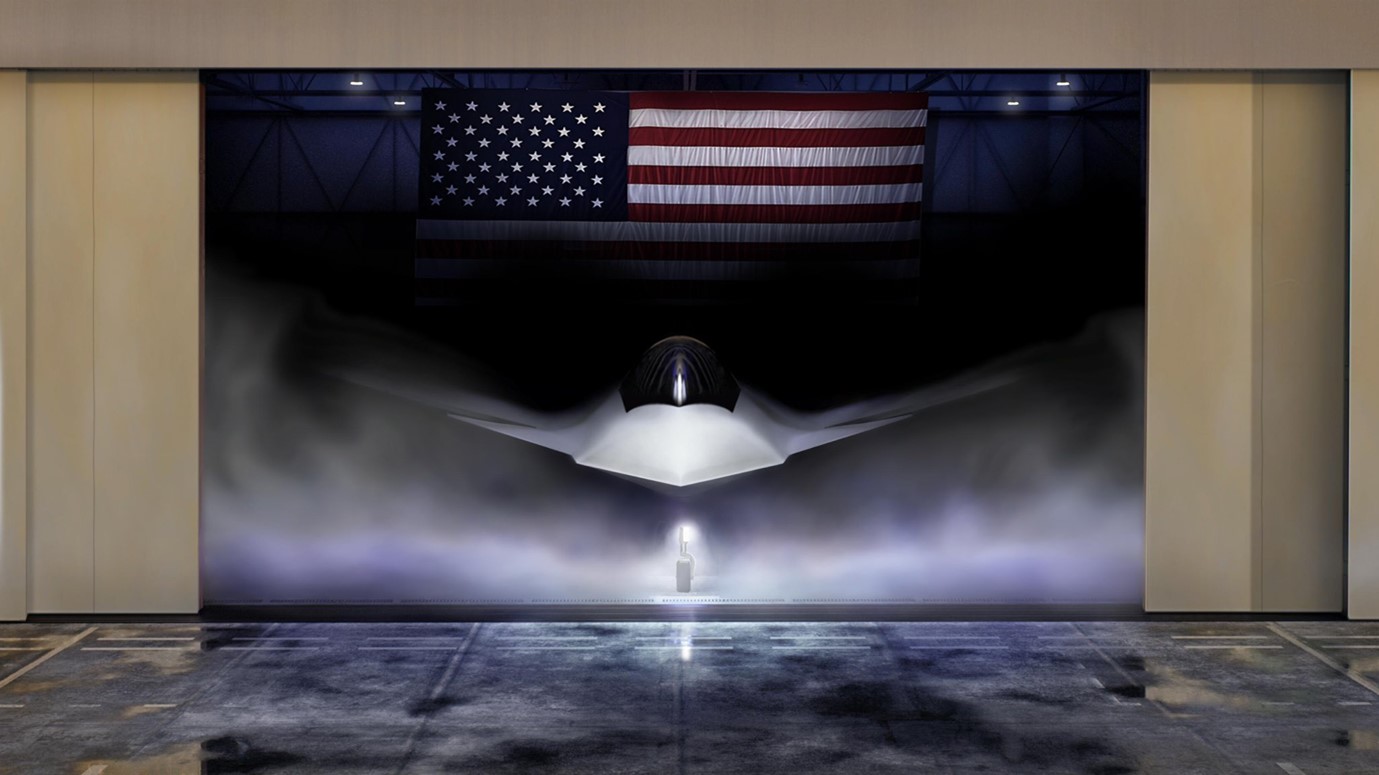
High Altitude Platform Systems: Imperative Players in Surveillance, Communications and Kill Chains

In October 2023, Pentagon press secretary Brigadier General Pat Ryder stated that the United States (US) had commenced Unmanned Aerial Vehicle (UAV) persistent surveillance flights over the Gaza Strip to support Israeli efforts to evacuate 240 people being held hostage in the area. These flights were made by the US MQ-9 Reaper, a High Altitude, Long Endurance (HALE) UAV, capable of flying for 27 hours at a service ceiling of 50,000 feet.

HAPS:Source-york.ac.uk
Such High-Altitude Platform Systems (HAPS) are long-endurance, high-altitude moving/static platforms capable of observation/surveillance and targeting missions. HAPS include UAVs/ Airplanes, and aerostatic platforms like Pseudo-Satellites (PS), including airships and balloons, for military/civil applications. While the term PS is also being used as an umbrella moniker to identify HAPS, this article will attempt to break down these systems into categories as above, depending on deployment method/system configuration.
Aerostatic platforms as above have been defined by the International Telecommunication Union (a United Nations agency dealing with information and communication technologies) as a ‘platform at an altitude of 20 to 50 Km and at a specified fixed-point relative to the earth’.
What Determines the Altitude of HAPS ?
HAPS need to operate in relatively stable, high-visibility conditions without interference from other aerial platforms. The Tropopause is the atmospheric boundary layer that divides the Troposphere and the Stratosphere, the two lowest layers of the atmosphere. It is at a height of approximately 17 Km (55700 feet) over the equator and 9 Km (29500 feet) over the polar regions, thereby giving an average altitude gradient of approximately 13 Km (42600 feet). The drag is considerably reduced in the Tropopause with significantly lower wind speeds, thus lending to greater stability and easier control of HAPS. Wind speed and turbulence are also significantly lower above the jet stream in the Stratosphere (56000 to 72000 feet). These altitudes are also above those of commercial airliners and are cloud-free with low wind speeds.
HALE UAVs
UAVs in the category of HAPS would be HALE UAVs, capable of staying aloft at/above 60,000 feet for over 24 hours. The US Air Force (USAF) Northrop Grumman RQ-4 Global Hawk is capable of carrying out electro-optical (EO) surveillance, target-designation and Signal Intelligence (SIGINT) operations. It can mount a 1360 Kg payload consisting of radio-relay equipment, EO/Infra-Red (IR) sensors, synthetic aperture radar (SAR) and high/low band SIGINT sensors. It can fly at 60,000 feet for over 34 hours and can therefore undertake near-continuous adverse-weather, day/night, wide-area intelligence/surveillance/reconnaissance (ISR) missions. This HALE UAV is the precursor of the Northrop Grumman MQ-4C Triton HALE UAV in service with the US Navy and the Royal Australian Air Force. The Triton was developed under the US Broad Area Maritime Surveillance program to undertake real-time persistent ISR missions over oceanic/littoral regions and for search and rescue missions. The Triton is expected to complement the Boeing P-8 Poseidon Maritime Patrol Aircraft (MPA) of the US Navy. It has reportedly been offered to and considered by India to complement the Indian Navy’s (IN) fleet of P-8I Neptune MPA, an adapted version of the Poseidon. The Triton has a service ceiling of 56,000 feet and an endurance of 30 hours. With regard to kinetic capabilities, the MQ-9 Reaper mentioned above is capable of carrying air-to-ground/air-to-air missiles and laser-guided bombs for air-to-air/anti-surface warfare (ASW).
India is acquiring 31 MQ-9B HALE UAVs, including 15 Sea-Guardians for the IN and 8 Sky-Guardians each for the Indian Army/Indian Air Force at an estimated cost of about US $ 4 Billion. The IN presently operates two leased Sea-Guardians. These HALE UAVs are capable of over-the-horizon (OTH) long-range strategic ISR and ASW. The UAV can be armed with Hellfire air-to-ground missiles and smart bombs for the latter role. The Sea-Guardian’s 360-degree surface-search radar also provides enhanced maritime domain awareness. The Sea-Guardian is also the only platform of its kind that can carry, release, and monitor sonobuoys (note the sonobuoy dispenser in the picture below). General Atomics Aeronautical Systems and Lockheed Martin are now collaborating to provide Net-Enabled Weapons (NEW) capability for the Sea-Guardian, which will provide the UAV enhanced ISR and targeting capability. The Sky-Guardian, a variant of the former, has significantly longer endurance and integrates Airborne Early Warning, long-range strategic ISR, ASW and Counter-Air Operations into its roles.


MQ-9B Sea/Sky Guardian: Source- adbr.com.au/ga-asi.com
Other HALE UAVs by Indian Defence manufacturers include TATA Advanced System’s TATA HA-ISR unmanned platform and Adani Defence’s HALE UAV, both in the conceptual/development stage.
The Guizhou WZ-7 Soaring Dragon is a HALE UAV developed by China for maritime surveillance/patrol and ASW roles. A redesigned version was displayed at the Zuhai Airshow in China in 2022. While the service ceiling is reported to be 59,000 feet, it has an endurance of less than 24 hours.

WZ-7 Soaring Dragon:Source-en.wikipedia.org
Pseudo-Satellites (PS)
PS are HAPS capable of persistent/targeted ISR missions previously within the capability of regular satellites. Unlike surveillance satellites, which cut a periodic swathe over areas of interest, PS can be configured/deployed for persistent surveillance/round-the-clock communication tasks. Such PS missions would be at a fraction of the cost incurred in deploying/controlling regular satellites, due to relative ease of deployment and relatively low maintenance/control costs.
High-altitude, long-endurance PS including stratoplanes, airships and balloons have come a long way since the German airships or Japanese-launched incendiary balloons of World War-II. These PS can now be employed as high-altitude long-observation platforms for ISR sensors/communications equipment that can operate over designated areas for indefinite periods of time in the Tropopause and beyond. Unobstructed from the sun at these altitudes, these platforms efficiently use solar power as an indefinite power source. Payloads include EO sensors/synthetic aperture radar (SAR), wireless transceivers for COMINT/radio relay and other weather/environment sensors. A significant advantage of HAPS over tethered (ground-based) aerostats, in addition to a far larger beyond line-of-sight/OTH swathe, would be the flexibility to be deployed/redeployed over different areas of interest depending on ISR/targeting requirements or imminent threat of detection/interception. These advantages are not available to tethered systems, which do not have the flexibility to rapidly re-deploy .
Surveillance payloads on PS could form part of a multi-domain sensing system (MDSS), which integrates airborne/surface/sub-surface sensors to build a cogent surveillance picture. Such high-altitude ISR platforms could be expected to fill a significant gap between ground-based/low-altitude ISR/communications platforms and conventional satellites. Additionally, PS could be efficiently employed for Electronic Warfare missions, for effective jamming of an adversary’s communications, and other facets of cyber warfare. Conversely, use of high-altitude systems as communications relay platforms is likely to be able to partially negate the efficacy of an adversary’s ground-based jammers. These ISR platforms would also prove invaluable in peacetime for early detection of natural disasters or law-enforcement operations.
Such platforms could also be employed for launch of precision-guided munitions/loitering munitions or could act as a launch platform for drone swarms, with surveillance/kinetic kill payloads, or for delivery of unattended ground sensors, by dispersion.

US Army Concept of MDSS:twz.com
(Note the use of PS for Relay/ ELINT/COMINT/ Sensor Delivery)
The Zephyr, manufactured by Airbus Defence & Space, is a solar/lithium cell-powered fixed-wing stratoplane- a stratospheric HAPS operating above 60,000 feet. It is capable of persistent, round-the-clock communications support and ISR, with a communication swathe of approximately 7,500 sq Km. The airframe weighs a mere 65 Kg. It can stay aloft for up to three months, with a future objective of six-month persistence. The payload capacity is currently 5 Kg, to be subsequently increased to 8 Kg and then to 14 Kg. The payload could be a combination of EO/IR sensors, mesh communications and/or COMINT. The Optical Advanced Earth Observation System for Zephyr (OPAZ) is tailor-made for the stratoplane. The plane can circumnavigate the globe in less than 10 days, which translates to substantial operational flexibility over a future six-month endurance capability. This HAPS would be difficult to detect/intercept, owing to its streamlined shape, electrical propulsion and high-altitude operation. It employs GPS navigation to remain on station. The first certification flight is scheduled for 2025.

Zephyr: Source-eurasiantimes.com
The BalMan manoeuverable strategic balloon has been developed by the French Company Hemeria for CNES, the French Space Agency. This PS can reportedly pilot its trajectory, once deployed. It is capable of performing persistent ISR/communications tasks and has been developed in two versions- pressurised balloons for deployment altitudes upto 20 Km (~65000 feet), with a payload of upto 50 Kg/endurance of several months, and ‘zero pressure’ balloons for deployment altitudes upto 45 Km (~1,50,000 feet) and large payloads (up to 2 tons) for several days. It will, however, favourably operate at altitudes in the 50,000 to 80,000 feet band due to reasons mentioned earlier in this article. The PS can manoeuver by filling/emptying its ballast tanks to gain/lose buoyancy and thus change altitude, allowing it to operate within a 100 Km box. The balloon is easier to launch with negligible preparation, compared to a solar-powered plane/airship, thus lending to operational flexibility. A Naval version is also envisaged, wherein a surface ship could launch one or more balloons for communication/ISR missions over open ocean/coastlines. The balloon could then manoeuver within the fleet’s area of operations for persistent support.

BalMan High-Altitude Balloon: Source-satelliteobservation.net
Stratobus is a solar-powered stratospheric airship built by Thales Alenia Space (a joint venture for hi-tech communications between the French Thales Group and the Italian Defence conglomerate Leonardo). which features drone and satellite characteristics. Hemeria is also involved in the design and manufacture of the airship’s envelopes- the outer structure of the airship, typically filled with helium or hydrogen gas. The shape of the envelope determines the aerodynamic qualities of the airship. The airship is able to stay aloft in the stratosphere for up to one year. It can maintain a stationary position above a fixed location on the earth, for persistent communications support/ISR. The airship can support a payload of up to 250 Kg, including EO sensors, wireless antennae for COMINT/SIGINT, SAR, or a combination thereof. The airship will be capable of LIDAR mapping of an area of interest and should see operational production by 2030.

The Staratobus:Source-actu.fr
Strat-Observer is a new generation Earth Observation service for capturing high-resolution images and live video from the stratosphere. This payload has been designed by Airbus Defence & Space and can be integrated onto a wide range of HAPS. It uses a steerable high-resolution optical camera, to capture 2500 km² per day at 18cm resolution (a substantially large swathe), for long-range ISR.
Construction of a large 1150 feet x 450 feet airship hangar was completed in 2015 in the Bosten Lake Region of China’s Xinjiang Province. Recent satellite imagery of July 2024 indicates the extension of this hangar. This facility has been associated with the development of high-altitude airships with likely roles for ISR/long-range communications/early-warning for missile defence, or to serve as launch-platforms for drones/other payloads. A previous satellite imagery showed what appeared to be a teardrop-shaped airship/aerostat on the apron ahead of the hangar. Evidence suggests that Unit 63655 of the PLA Strategic Support Force (SSF), could be responsible for this complex. This Unit is mandated, among other tasks, to conduct research into very large airships. The facility could house the Yuang Meng, a controllable stratospheric airship designed to operate in the 65,000-300,000 feet altitude band, giving it near-space capability, with an endurance of six months. The airship’s 300 Kg payload could include wide-band communication for redundancy in case of loss of satellite link, high-definition observation, long-range detection of stealth aircraft/cruise missiles/warships and space imaging, including stereo imagery of objects in orbit.

China’s Airship Complex in Xinjiang:Source-twz.com

Rendition of Yuang Meng:Source-www.twz.com
Conclusion
In an era where acquisition, maintenance and operating costs of airborne platforms have become an important factor in determining procurement, HAPS offer a relatively low-cost option for ISR and kinetic kill tasks. Additionally, ease of control, longevity, obscurity and manoeuverability allow such platforms to stake claim at being the favourable option in the paradigm of persistent, long-endurance, on-station missions of the future.











POST COMMENTS (0)